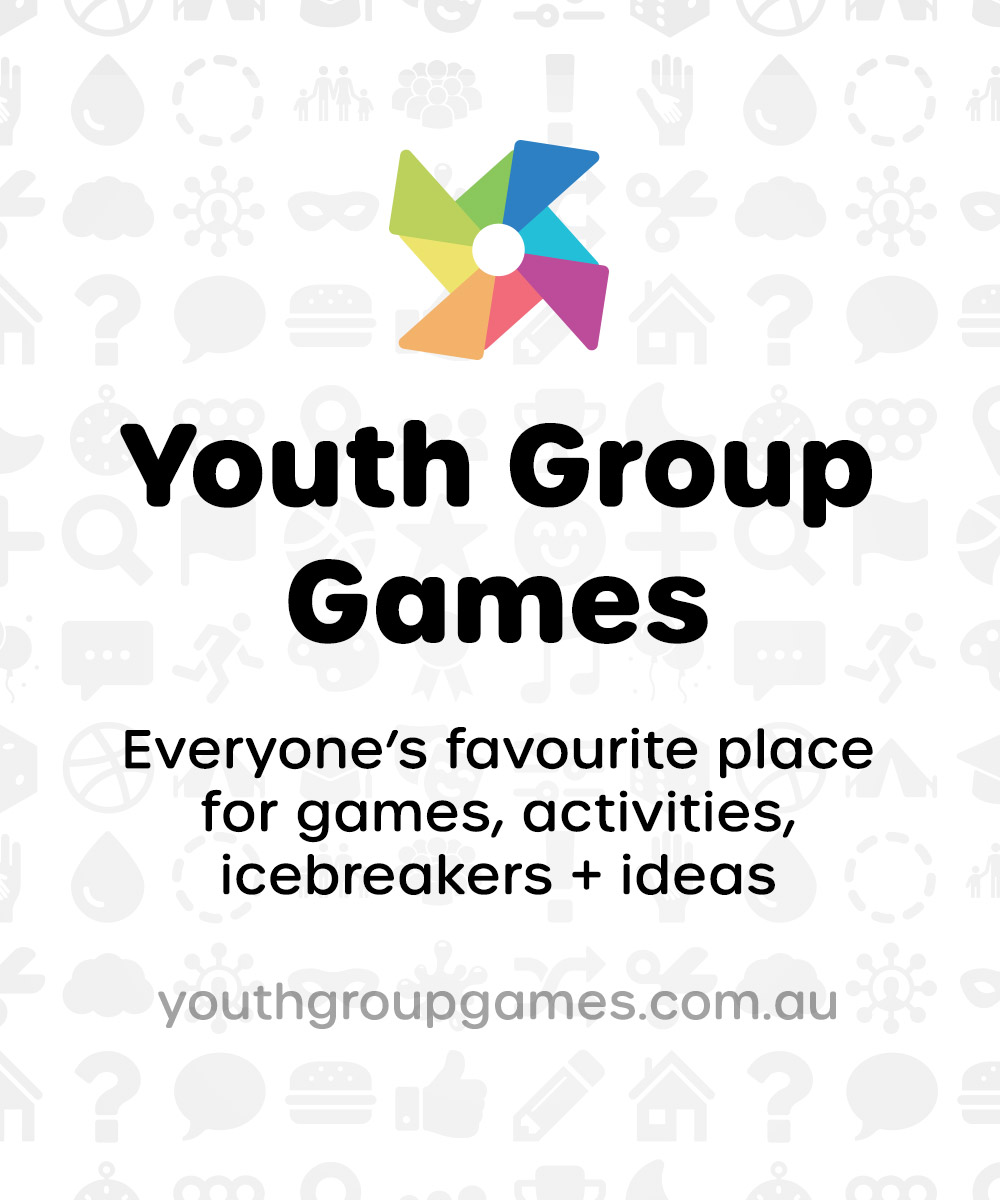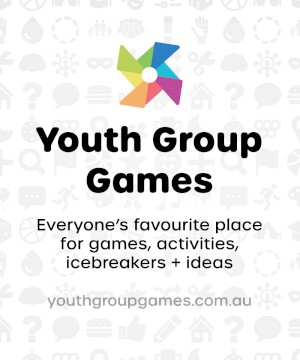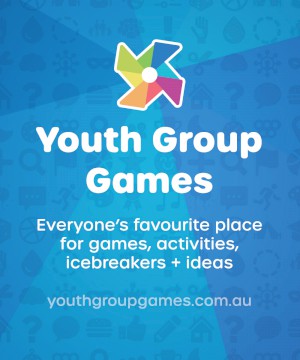Bases
An active team-building wide game for large groups
- Outdoors
- Multiple Teams
- Standard (15 - 45 mins)
- Over $20
- No Mess
- Active
- Team Building
- Wide
- Large Groups
Added by
James
on
View Source
How To Play Bases
Materials Needed
What You?ll Need:
People: At least 5 players per team.
Flag Football Belts and Flags: Each player and each base needs a belt with 2-3 removable flags that match the team?s color. If you have 3 flags per belt, rule modifications will follow in ()*. Certain special units need extra flags or an extra belt. If you don?t have extra belts for bases or extra flags for special units, colored bandannas will work (see 'Team Bases' and 'Player Units' below).
Space: A large, semi-open area, like a park with some trees. For safety, decide if boundaries are necessary.
Note: With large fields or large teams, you may want to have phones or walkie talkies so you can communicate more easily.
Bases
An Outdoor Team Game
Overview:
Bases is a fast-paced outdoor game that combines elements of Capture the Flag, Flag Football, and role playing.
Objectives for Winning:
The game ends when one team destroys the other's Home base. To win, a team must outscore their opponent. Teams score points for:
Building Field bases = 1 point each
Destroying their opponent's Field bases = 1 point each
Destroying their opponent's Home base = 3 points
In the event of a tie, a short game is played with the teams' Home bases at the two base locations nearest each other. Teams start with no upgrades nor Field bases, and the first to destroy the other's Home base wins (see 'Team Bases' below).
Note: Make the teams as balanced as possible, and readjust if necessary. Always make safety and honesty a priority.
What You'll Need:
People: At least 5 players per team.
Flag Football Belts and Flags: Each player and each base needs a belt with 2-3 removable flags that match the team's color. If you have 3 flags per belt, rule modifications will follow in ()*. Certain special units need extra flags or an extra belt. If you don't have extra belts for bases or extra flags for special units, colored bandannas will work (see 'Team Bases' and 'Player Units' below).
Space: A large, semi-open area, like a park with some trees. For safety, decide if boundaries are necessary.
Note: With large fields or large teams, you may want to have phones or walkie talkies so you can communicate more easily.
Player Elimination:
When all of a player's flags are removed, he or she has been eliminated and must 'Recharge' to continue playing. To Recharge, they return to a team base to put their flags back on. If a player has lost a flag but still has another, he or she can return to a base to put it back on.
Note: Players must be honest in acknowledging the loss of their own, a teammate's, or an opponent's flags. The eliminated player is responsible for finding his or her own flags. It is important that players who remove an opponents' flags put them in an obvious place or give them back. If a player has lost a flag but still has another, they should keep the unattached flag with them until they Recharge.
Team Bases:
Home & Field Bases: 1-2 (1-3)* flags/bandannas or a belt with 1-2 (1-3)* flags mark teams' Home and Field bases. A team's bases serve as Recharge locations.
Team Base Locations: Before each game begins, teams agree on the location of each Home base, and choose the locations where Field bases may be built (specific trees, posts, etc). Teams should select 1-2 Field base locations near each team's Home base, and 1-3 near the middle of the field. Make sure Field base locations are evenly distributed. At the beginning of each game, the base locations near each team's Home base belong to them, and are marked by their team's Field base flags. The base locations near the middle of the field are neutral, and can be built by either team. Neutral bases should be obvious or marked. If a base is destroyed, either team can rebuild at that location.
Note: Field bases that belong to teams at the beginning of the game do not count towards their score. Base flags should always be in plain sight and within reach.
Protecting Bases: To protect Home and Field bases, a team assigns Defenders to them (see 'Player Units' below). A base can have 1 Defender for each of the base's flags. At the beginning of the game, each team base should have at least 1 Defender. For every 10 players each team has, they may add another belt with 2 (3)* base flags to their Home base (<10 players per team = 1 belt with 2 (3)* flags, 10 players per team = 2 belts with 4 (6)* flags, 20 players per team = 3 belts with 6 (9)* flags, etc).
Destroying Bases: To destroy a base, its flags must be removed. A base's flags cannot be removed until all of its Defenders have been eliminated.
Player Units:
Basic Units:
Attackers: Attackers wear 1 (2)* flag. They focus on removing opponents' flags and destroying their bases. Attackers may begin the game at any of the team's bases.
Defenders: Defenders wear 1 (2)* flag, and their belt backwards. Defenders also remove flags, but focus on building, defending, and representing their team's bases.
Building: To build a base, a Defender places base flags, or a belt with base flags, onto a Field base location. If the Defender is eliminated before building a Field base, he or she must return to the Home base with the base flags and Recharge.
Defending & Representing:
A. Once a base is built and its Defenders are assigned, teams cannot add Defenders to it later in the game. B. Defenders must stay within about 5 yards of the base or they become an Attacker, and can no longer play as that base's Defender. C. If eliminated, Defenders must Recharge at a different base or they become an Attacker, and can no longer play as the base's Defender (this includes Home base Defenders). If they've lost a flag but still have another, they can put it back on at the base they represent.
Note: Defenders can voluntarily leave the base's 5-yard radius to become an Attacker. If there is ever any question about a base's 5-yard radius, use the Defender's striding pace as a yard. When a Field base has been destroyed, the last Defender eliminated should take the base flags back to the team's Home base.
Coordinator: Coordinators are not necessary to play, but are helpful for large teams and large fields. They don't wear or remove flags, but coordinate the team's efforts by phone or other means, and keep track of team upgrades. They may go anywhere on the field.
Special Units:
Note: Teams cannot use Special Units until they've earned certain achievements (see 'Upgrades' below). Before playing as a Special unit, players must first return to the team's Home base to get an extra flag.
Healers: Healers wear 1 flag, and carry their second flag in one hand and a flag/bandanna in the other (2 extra flags)*. Healers act as a Recharge location for their teammates, and can also remove opponents' flags. If eliminated, a Healer must Recharge at a base or another Healer. Players who have lost a flag but still have another, can go to Healers to put it back on. Defenders that Recharge at a Healer become Attackers.
2-Flag Attackers: Attackers wear 2 (3)* flags.
2-Flag Defenders: Defenders wear 2 (3)* flags, with their belt backwards.
Siege: Siege players wear 1 flag, hold 1 (2)* flag in their non-dominant hand, and wear their belt backwards. They can remove Home or Field base flags before Defenders have been eliminated. When players begin or continue playing as Siege, they must start or Recharge at a base, not at a Healer.
4-Flag Attacker: 4-Flag Attackers wear 2 belts with a total of 4 (6)* flags. When this unit removes just 1 flag from a player, the opponent is eliminated, regardless of the number of their remaining flags.
Upgrades:
Players may use special units as soon as their team reaches specific achievements during the game, listed in the table below.
Achievement = Upgrade
Eliminate 1 opponent = Healers
Destroy an opponent Field base = 2-Flag Attackers
Build a Field base* = 2-Flag Defenders
Achieve all of the above = Siege
Map Control = 4-Flag Attackers
*Build on a Field base location that was neutral or belonged to the opponent when the game began.
Note: A team's upgrades are lost if their achievements are reversed (opponent rebuilds a destroyed Field base, etc). To gain Map Control, a team must have bases on more than half of the field's Field base locations (2/2, 2/3, 3/4, etc). If a team achieves this, any of the team's Home base Defenders may play as a 4-Flag Attacker once per game. When eliminated, a 4-Flag Attacker cannot return to play as the Home base's Defender.
Thank You!
Most updated rules here.
Themes
teamwork, exercise
Added by
James
on 21 June 2011
View Source





5 Comments
Add a commenthey, this game sounds sweet! I can't wait to try it at my youth groups next half nighter, thanks!
It's to organised. Too much to learn. The kids get bored way too easily! It needs to be a bit more simple... Good concept though! Love your work!!!
The document you posted at the end was much simpler and clearer than the description you have given here so I will comment on that.
It sounds a lot like capture the flag but slightly different with more than one base and no "safe zone" I might give it a try but I'm thinking it's a little too complicated for the age group I teach.
I think that this game could be legendary! But it is a bit wordy.. I must say it was well worth the read and I will be testing this out with my youth once I have read through it again a few times to try and nail down how it is played. I will post again with feedback once I have tried it.
TOOOOOOOOOOOOOOOOO many words. I didn't read it but I think its BORING[because of to many words]